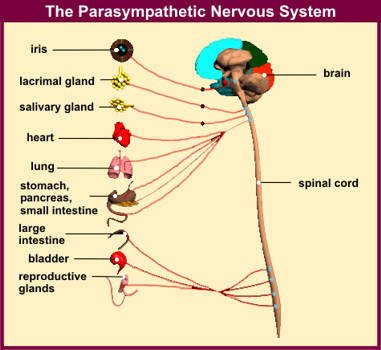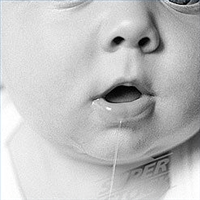An increased salivary secretion in termed as sialorrhea or ptyalism.Â
Mechanisms
- The secretory innervation of the salivary glands is primarily under the control of the parasympathetic nervous system.
- Stimulation of the parasympathetic system causes profuse secretion of watery saliva.
- Some person are unable to swallow their saliva fast enough to prevent drooling
Isolated drooling in infants and toddlers is normal and is unlikely to be a sign of either disease or complications. It may be associated with teething. Drooling in infants and young children may be exacerbated by upper respiratory infections and nasal allergies.
Drooling associated with fever or trouble swallowing may be a sign of a more serious disease including:
Retropharyngeal abscess
Peritonsillar abscess
Tonsilitis
Mononucleosis
Strep throat
Parkinson’s disease
Rabies
Mercury poisoning
Amyotrophic lateral sclerosis
Tumors of the upper aerodigestive tract
A sudden onset of drooling may indicate poisoning (especially by pesticides or mercury) or reaction to snake or insect venom or in some cases of a numbed mouth from either Orajel, or when going to the dentist office. Some medications can cause drooling as well such as the pain relieving orajel medication. Some neurological problems also cause drooling. Excess Capsaicin can cause drooling as well, an example being the ingestion of particularly high Scoville Unit chili peppers.
Another form of ptyalism is associated with pregnancy, most common in women with a condition known as Hyperemesis Gravidarium, or uncontrollable and frequent nausea and vomiting during pregnancy which is far worse than typical “morning sickness”. With Hyperemesis, ptyalism is a side-effect, which is a natural response to uncontrollable vomiting. With normal vomiting, salivary glands are stimulated to lubricate the oesophagus and mouth to aid in expelling of stomach contents. During a hyperemetic pregnancy, many woman complain of excessive saliva and an inability to swallow this saliva. Some women note having to carry around a “spitoon” or using a cup to spit. Swallowing their own saliva has been noted to gag and further nauseate the women making the hyperemesis that much worse.
There are several theories as to the causes of hyperemesis and related symptoms such as ptyalism. Although hyperemesis was once considered a psychological disease, the medical community now considers hyperemesis as a real and serious physiological condition. Some pregnant women who suffer end up terminating the pregnancy. Others refuse to carry another child. The most frequent act is preparing for the onset of hyperemesis if a subsequent pregnancy is expected
Causes
-  Drugs – certain drugs have the ability to stimulate salivary flow. Such drugs are known as sialogogues. Increased salivation due to the drugs can result from a variety of pharmacologic effects. Besides acting on the parasympathetic and sympathetic receptors, drug action can lead to sialorrhea by direct central nervous system stimulation or as a result of nasal and oropharyngeal irritation, which leads to afferent stimulation of salivary nuclei.
- Local factors -Â it can be result of different types of stomatitis, aggressive necrotizing ulcerative gingivitis, erythema multiforme.
- Systemic Disease – paralysis, alcoholic neuritis, Parkinson’s disease, epilepsy, Down’s syndrome, undetermined neuromuscular disorders or following a head injury or stroke
- Miscellaneous – psychic factor, metal poisoning, facial paralysis
Clinical Features :
- The salivary flow is more in infancy and childhood, but the drooling observed in child is related to inadequate swallowing rather than excessive production
- Drooling or sialorrhea can be a devastating problem for the affected child or adult.
- The problem may range from mild embarassment and discomfort to emotional and physical impairment
- The affected person may require numerous clothings and/or bib changes per day.
- He or she may develop cheek scarring, lip chapping or infection from constant exposure to saliva
- The soiling of clothes, carpets, furniture, books and people often results in social rejection, employment difficulties and stigmatization.
MangementÂ
- No treatment is recommended in children less than 4 years of age with only mild or moderate amount of drooling which may improve spontaneously
- Oral motor training-oral motor training, intended to improve motor skills, is the key non-surgical management of modality and all patients ( if appropriate ) should have a minimum of 6 months of this type of therapy format, before any surgical management is considered.
- Biofeedback – Biofeedback utilizes conditioning techniques to train you to swallow more frequently. It has been utilized in aware patients with only a modest drolling problem and who have very motivated patients.
- Removal of local factors – situational factors may contribute to drooling should be eliminated if possible that is dental disease, nasal airway obstruction, poor seating and inappropriate medications.
- Drug therapy
- The anti-cholinergic drug , atropine sulfate, has been shown to reduce the amount of resting secretion, intraoral accumulation and pharyngeal-laryngeal pooling of the saliva in more than 50 % of the patients
- The drug is a competitive antagonist of muscarinic actions of acetylcholine. It does not prevent the release of acetylcholine but antagonizes the effect of this neurotransmitter on the effector cells. This action results in drying of the mouth through reduction of salivary gland secretions.
- Atropine-induced inhibition of salivation occurs within 30 minutes to an hour. Inhibition peaks within 2 hours after oral administration but can persist up to 4 hours
- The usual dose for adults is 0.4 mg , every 4-6 hours. In children, the suggested dose is 0.01 mg/kg but generally not exceeding 0.4 mg every 4-6 hours.
- Due to potential side effects, atropine sulfate is contraindicated in patients with asthma, glaucoma or synechia ( adhesions) between the iris and the lens of the eye
- Other drugs which are used as anti-sialogogue are scopolamine (0.4-0.6 mg), methantheline (50-100 mg) and propantheline (15-30 mg)
- Surgery is primary recommendation in individuals with a cognitive delay and profuse drooling and secondarily in those that have failed to non-surgical therapy for a minimum of 6 months.

